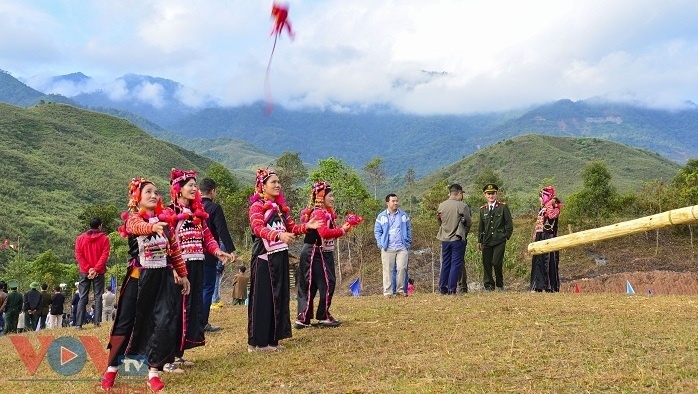Although there is no fixed day to organise the festival, it is a rule that the event must be observed on the day of the Dragon, according to the lunar calendar.
Prior to the festival, Ha Nhi ethnic people in Sin Thau commune, Muong Nhe district, are busy decorating their houses and the village’s streets. The three-day festival offers an opportunity to those who are working far from home to reunite with their family members. It is also an occasion for descendants to pay gratitude to their ancestors and pray for a new year full of happiness and prosperity.
The most important preparatory step in each family is preparing a tray of offerings, which include a pig, vegetables, and traditional cakes. Ha Nhi ethnic women often cook ‘banh troi’ (floating rice cake) and ‘banh day’ (round glutinous rice cake) as offerings for ancestors.
After slaughtering the pig, the house’s owner often takes out its liver, because in Ha Nhi people believe the liver will reveal the future of the coming year. Accordingly, the liver with healthy red colour will signal a blessed new year for the family.
During the festival, people are dressed in their most colourful outfits to visit their neighbours’ houses and take part in various folk games, such as ‘con’ throwing (throwing a cloth ball through a ring), swing, and humming top playing.
Visitors to the festival will be invited to join Xoe dance, folklore art performances, and many exciting sporting events.
The festival is not only an important event of Ha Nhi ethnic community but also an opportunity for visitors to explore the indigenous cultural identities of an ethnic group in a mountainous province of Vietnam.




